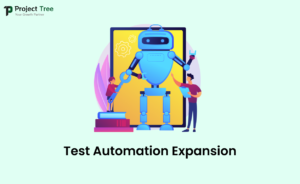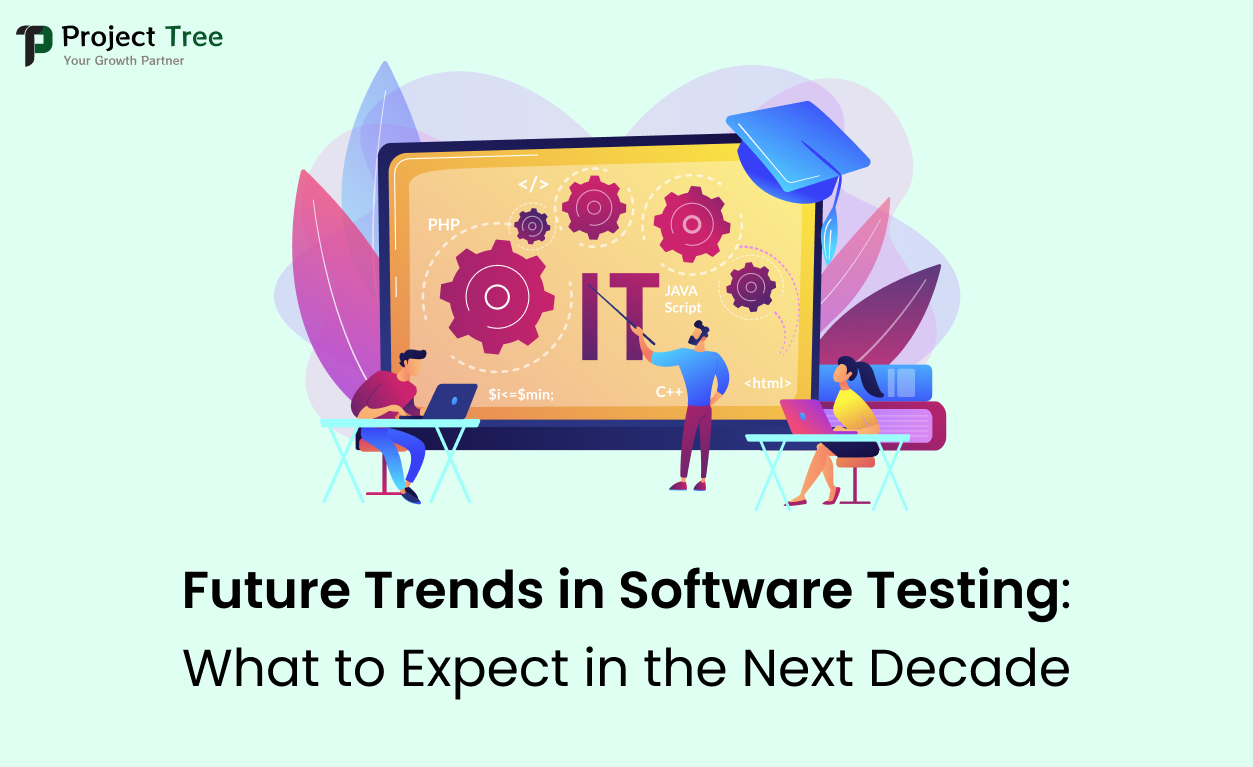Software testing is an essential part of a software development lifecycle, ensuring solutions fulfill requirements for quality before they reach customers. Testing software is a field that continues to change according to technology. A preview of the next 10 years is given below.
1. Increased Use of AI and Machine Learning
Software testing is going to be completely transformed by machine learning and artificial intelligence. Regression analysis along with test case generation are both recurring tasks that technology may perform. Huge amounts of information will be looked at by AI-driven technologies to identify patterns and anticipate potential issues. The modification is going to result in improved bug identification as well as improved testing processes.
AI algorithms can help increase coverage of tests by considering more test cases than conventional methods. It helps to identify edge situations that might have been missed otherwise. To maximize future testing attempts, algorithms that use machine learning will acquire information from past test results, which will make them smarter and more flexible.
2. Shift-Left Testing
Early testing in the development process is crucial, as shown by shift-left testing. Tests usually come following the development stage. The shift-left technique, on the other hand, includes tests from the very start of development. Quick identification of errors made available by this combination reduces the cost and time required for solutions.
Tests can help teams find problems quicker in continuous integration/continuous deployment (CI/CD) workflows. This will be an increase in the number of shift-left-supporting software testing for automated testing that will allow quicker and more regular testing.
3. Test Automation Expansion

Software Testing automation is not a new concept, but its use is growing. Automation tools will advance in complexity to handle a wider range of tests. Automation will cover security, usability, and efficiency tests along with testing for functionality.
Test automation usage will also be boosted by the rise of low-code and no-code platforms. With the help of such systems, individuals with no previous knowledge of programming can design and manage scripts for tests. Therefore, teams with different degrees of technological expertise will find it simpler to use test automation.
4. Integration of DevOps and Testing
The seamless integration of operations and development is the primary objective of DevOps approaches. In this setting, testing occurs as a continuous process rather than one stage. Testing will grow more regular and efficient as DevOps and testing are combined.
A fundamental component of DevOps, continuous testing ensures that tests are run constantly during every stage of the development lifecycle. This approach allows immediate detection and solution of problems, leading to a quicker software distribution cycle and improved software quality.
5. Emphasis on Security Testing
Security testing grows more essential as concerns about attacks and data breaches increase. The incorporation of safety testing in the development process will receive more attention in the next ten years. Tools for automated testing for security are going to grow essential for finding problems earlier on.
Techniques like static security testing of applications (SAST) and dynamic security testing of applications (DAST) are going to be used in testing for security. By implementing these steps, weaknesses in the source code and execution can be discovered.
6. Enhanced Testing for Cloud and Microservices
It will be essential that methods of testing shift as more companies use cloud-based computing and service models. Testing the scalability, performance, and reliability of services in remote situations is a necessary step in evaluating systems that are cloud-based.
Tests become challenging while utilizing the microservices as an architecture due to issues like managing connections and ensuring compatibility. Microservices are service test frameworks and tools that are growing and providing improved support for this design.
7. Focus on User Experience Testing
User experience (UX) testing is going to grow increasingly essential as companies work to create applications that are easy to operate and simple. UX testing evaluates how users interact with programs, emphasizing overall satisfaction, accessibility, and access.
Tools for automatic UX testing can help with assessing user interfaces and identifying issues with usability. The development and testing processes will be strongly influenced by input from users, which will ensure that applications live up to their expectations.
8. Adoption of Blockchain Testing
Blockchain has grown increasingly common in a number of industries, such as supply chain management and finance. Blockchain testing of applications needs an individual methodology focusing on elements like the accuracy of data, agreement procedures, and contract technology.
The unique requirements of this kind of technology will lead to the development of specific instruments and testing processes for blockchain. As a component of the procedure for testing, the smart contract’s accuracy will be verified, and the network’s efficiency and safety will be tracked.
9. Growth of Test Data Management
Accurate and trustworthy testing requires efficient test information management. Maintaining test data will grow increasingly important as applications become more complex. Solutions to handle test data will assist with the generation, maintenance, and safety of test data.
These tools can assist with information anonymity, making sure sensitive data remains secure throughout testing. Test cases that are more efficient and realistic are going to benefit from better test data management procedures.
10. Integration of Testing with AI-Driven Development
At Projecttree the entire growth lifecycle can be enhanced by merging testing processes with AI tools for development. Testing tools will interact with AI-driven tools for development, like code development and automatic issue repairs, to produce a simpler and more efficient strategy.
The primary objective of testing will be to verify based on artificial intelligence tools’ results while making sure they meet standards of excellence. Better software with shorter development times will come about due to the synergies of AI-driven development and testing.
Conclusion
Software testing is required to make major strides in the future. While shift-left testing and continual integration will boost efficiency, artificially intelligent (AI) and machine learning (ML) are going to alter methods for testing. Procedures will be simplified by the development of automated tests and the incorporation of DevOps, and testing for security will address the increasing worries within data protection.
The conventional testing approaches and frameworks will also change over the years, specifically with the emergence of cloud computing, microservices, and blockchain technologies. User experience testing will confirm that applications are fit for users, and efficient test data management will facilitate real-life testing.
The coming decade will see an advanced level of software testing that will revolutionize software development for the better. Adoption of the above trends will be vital for organizations wishing to sustain themselves in an environment characterized by the application of complex technologies.
Learn how Project Tree supports the development of DrPro, a comprehensive platform for modern healthcare management.
FAQs
Q1. What role will AI and machine learning play in software testing?
AI and machine learning will perform regression Software Testing and test case generation, which are considered to be routine activities. These technologies will also allow pattern matching on data, predicting possible problems in data, maximizing test coverage, and running through more scenarios than what nose-based testing offers.
Q2. What is shift-left testing, and why is it important?
Shift-left testing entails the bringing of testing activities right from the initial stage of the development process so that any developing defects can be identified and corrected. This makes it possible to rectify problems at an early stage, thus decreasing the expenses and time used in rectifying more complex problems.
Q3. How will test automation evolve in the next decade?
Test automation will be extended and become not only about functional testing but performance, security, and usability testing as well. Increased utilization of low-code and no-code platforms in different forms will be applicable to software testing automation, where teams that are not so experienced in writing code can create their scripts.
Q4. Why is security testing becoming more critical?
In the recent past, the threat of cybercriminal activity on organizations has been on the rise, and therefore security testing is crucial as a way of discovering the possible flaws in the systems right from the development stage. The use of automated tools in security testing will provide significant support in the process of verifying whether applications are secure against possible attacks.
Q5. How will cloud computing and microservices impact software testing?
Software Testing approaches will have to be refined related to such specific issues as cloud applications and microservice usage. This includes the confirmation of performance, scalability, and interoperability in distributed estates, as well as dependencies for services.

